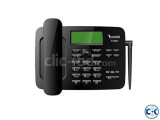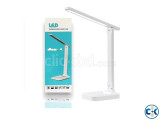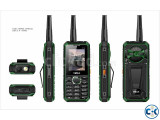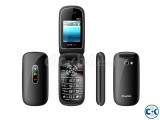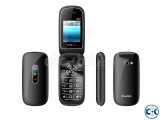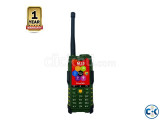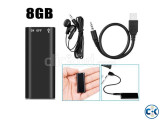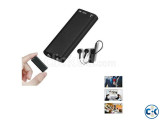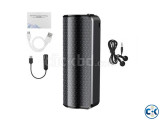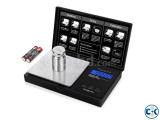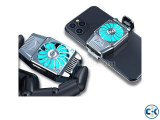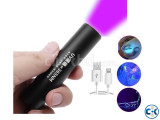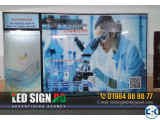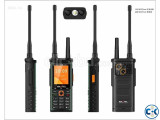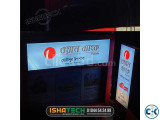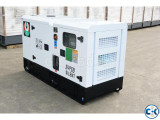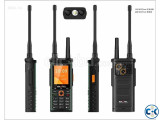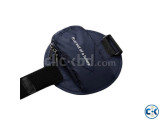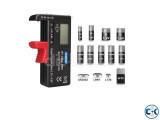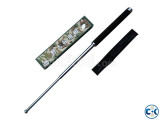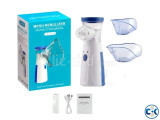My ClickBD
Brand new
Combined Hardness Tester Novotest T-UD3 Price
Lowest price in Bangladesh:
Highlights
- Type: NOVOTEST T-UD3
Seller info
Sold by:
BDNDT
Member since:
28 Jan 2022
Location:
Dhaka Mirpur
Safety tips:
Don’t pay in advance
Meet in a safe & public place
Meet in a safe & public place
Description
DESCRIPTION for Combined Hardness Tester Novotest T-UD3 Price price in Bangladesh
|
Combined Hardness Tester NOVOTEST T-UD3 combines two methods of measuring hardness by an indirect method: Ultrasonic Contact Impedance (ASTM A1038) and Leeb (ASTM A956). This makes the device the most versatile portable device in the world. The ability to connect both probes combines the advantages of both methods and providing users the opportunity to use the one that is most suitable for solving a specific task. The Combined Hardness Tester NOVOTEST T-UD3 allows user to measure the hardness of any metals, parts of any shape and thickness, measure the hardness of the surface hardened layers and evaluate the tensile strength. Innovation! Optionally, the device can be equipped with a Bluetooth module! Do hardness measurements, calibrate the device, set up a convenient display of values, save the results of hardness measurements, synchronize the archive with your other devices and a PC, transfer measurement results to your colleagues – all this is available with your smartphone thanks to the special NOVOTEST app for Android. Hardness testers have never had such opportunities! Using a Bluetooth connection, your smartphone connects to the hardness tester and you have a completely new device – a new generation hardness tester! The intuitive interface, ample opportunities for documenting results, Internet access, touch screen, camera, microphone and GPS receiver of a smartphone turn your hardness tester into something completely unique and previously inaccessible. With NOVOTEST App you are able: – setting and calibration of the hardness tester; – display of measurement results in real time in numerical form with the construction of a graph, histogram or statistics; – take a picture of the test object with the puting of hardness marks; creation of a video of the controlled product; – recording audio notes fro the tested object; – automatic saving of measurement geolocation on Google maps; – displaying a Google map with markers of places of measurements made on it and the ability to view these measurements; – displaying the calendar of measurements (presentation of the archive in the form of measurements grouped by date); – formation of the final comprehensive report on the measurement; – sending a finished report to e-mail, messenger (or in any convenient way) directly from the application; – flexible structure of the archive of measurements – completely similar to the usual explorer, with the ability to create folders and files with any names; – synchronization with PC and other smartphones; – cloud service for storing the archive of measurements; – automatic and manual synchronization of cloud measurement archives between devices; – launching the Google navigation mode, building a route and accompanying to the point at which the measurements were made – the ability to store archives of other devices with Bluetooth in one application. The main advantages of the Combined Hardness Tester NOVOTEST T-UD3: ABILITY OF CONNECTING BOTH METHODS PROBES WITHOUT TURNING OFF THE DEVICE The user can measure the hardness of completely different metal products of different shapes, structures, materials and the degree of surface preparation with same unit, just replacing probe. SMALL PARTS MEASURING Using the UCI, the operator can measure small products, we recommend parts weighing from 100 gr and a thickness from 1 mm, and when using the UCI Probe Test Stand NOVOTEST, even thinner. COMPLEX SHAPE PRODUCTS MEASURING Also, with the help of the ultrasonic probe, the user will be able to solve the tasks of measuring the hardness of grooves, surfaces of small radius, inaccessible places and products of complex shape. SMALL IMPRINT OF UCI TYPE PROBE Due to the fact that the UCI probe has a penetration depth of only a few microns, it becomes possible to work with products with high print requirements (the maximum non-destructive method is required), as well as measure the hardness of hardened layers, such as nitriding and cementation. MEASURING PARTS WITH BAD SURFACE Using a dynamic probe (Leeb probe), the user can test the hardness of massive products with poorly prepared surfaces. The method also allows to measure products with a coarse-grained structure without a significant dispersion of measurements. |



